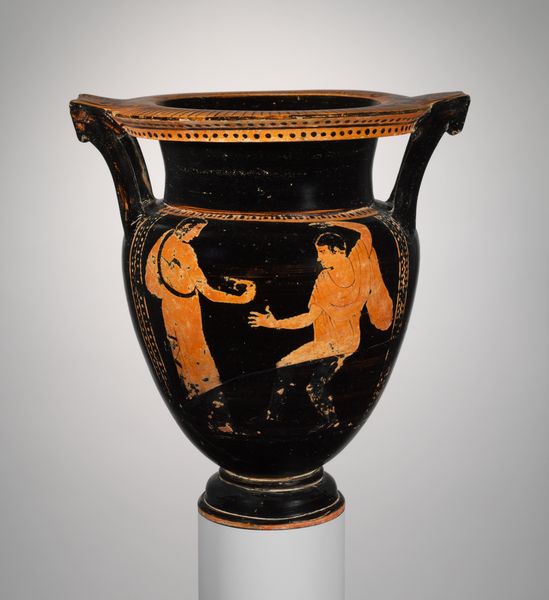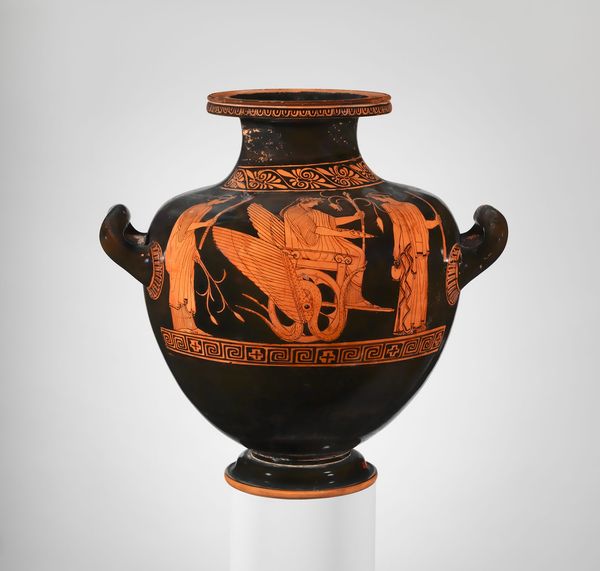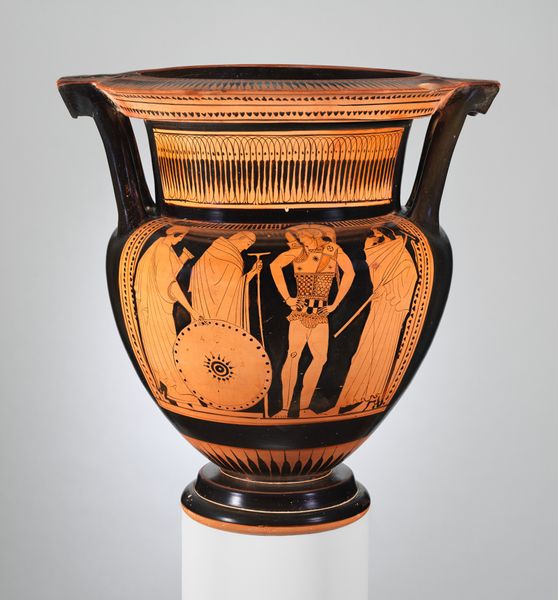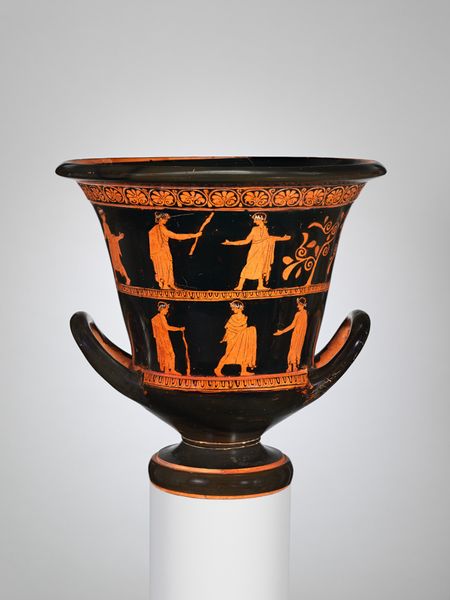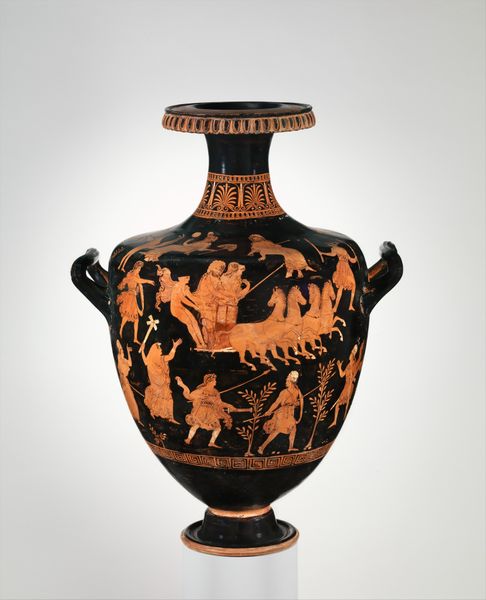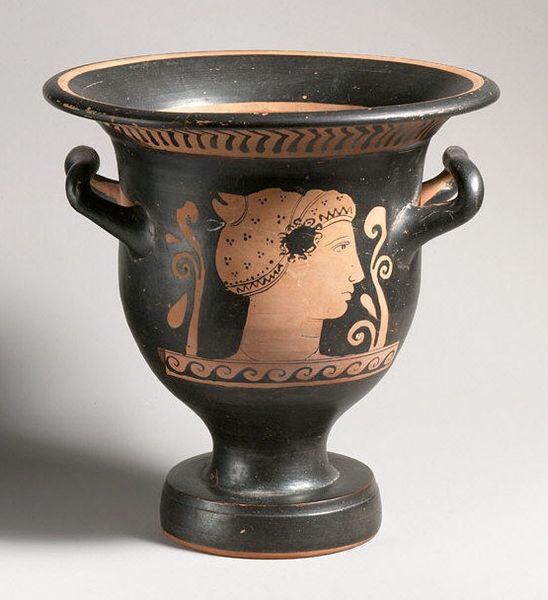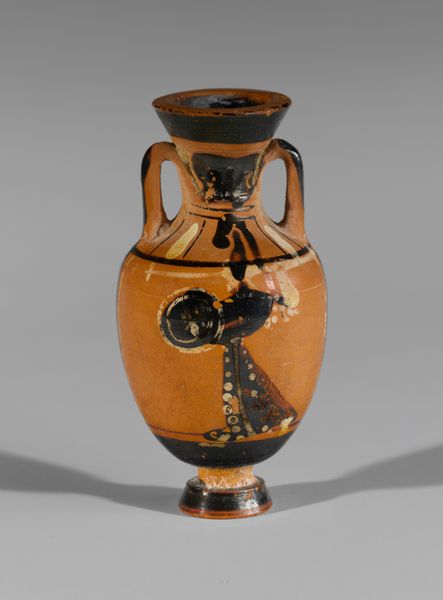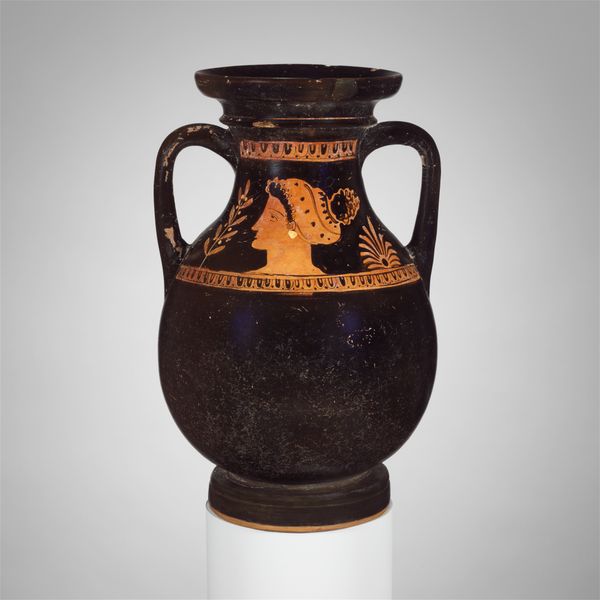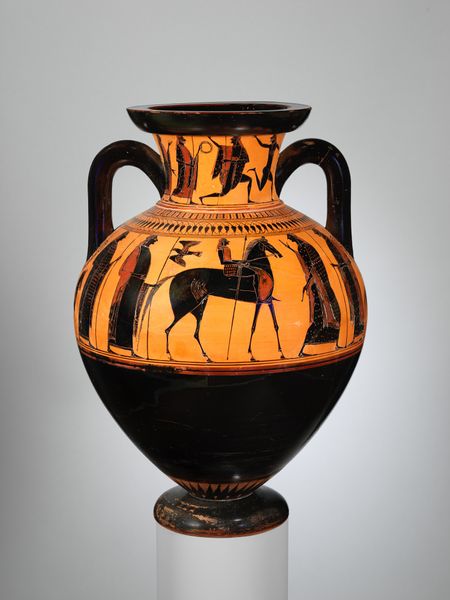
Terracotta psykter-column-krater (vase for chilling and mixing wine and water) 480 BC
0:00
0:00
ceramic
#
narrative-art
#
greek-and-roman-art
#
ceramic
#
vase
#
figuration
#
roman-art
#
ancient-mediterranean
#
ceramic
#
history-painting
Dimensions: Other: 20 13/16 x 8 1/4 in. (52.8 x 21 cm)
Copyright: Public Domain
Editor: This is a terracotta psykter-column-krater, a vase for chilling and mixing wine, dating back to 480 BC. It’s currently housed in the Metropolitan Museum of Art. I find the figures depicted quite striking—very theatrical in their poses, like actors on a stage. What narratives do you see embedded within the imagery of this vase? Curator: It's fascinating how objects like these become time capsules, isn't it? This vase, specifically, whispers stories of symposiums and rituals. Note the contrast between the black background and the vibrant orange figures. That’s more than just decoration, it's a conscious effort to highlight specific archetypes or mythic figures. The dramatic gestures, as you noticed, are almost like visual cues to the cultural memory. Does it remind you of anything else? Editor: You’re right, they do feel like familiar figures from mythology or literature. Maybe it's the composition, too? The figures are carefully placed as if they are a repeated motif. Is this something unique to the art in that period? Curator: It's characteristic, certainly. Repetition reinforced specific values and societal beliefs. Consider, for example, the placement of particular gods, and how that communicated their perceived power or influence in society at the time. Can you see examples here that suggest that sort of hierarchy? Editor: Now that you point it out, I do notice some patterns that suggest ranking! This gives me a lot to think about for the essay. Curator: Exactly! The image isn’t merely decorative, but deeply encoded with meaning that resonates even today. Every element, from the shape to the depicted scenes, serves a symbolic function. Editor: It's remarkable to consider how a drinking vessel could embody so much about the worldview of a culture! Curator: Precisely. The object itself is the message.
Comments
No comments
Be the first to comment and join the conversation on the ultimate creative platform.
